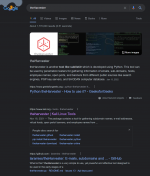For those who would like another lab/testing environment option, I setup 4 Raspberry Pi 4s with ESXi and an ESXi host running vCenter to cluster. I have attached the instructions on how to setup ESXi on a Raspberry Pi. This was more about a creative lab option to have fun with the class and demonstrate virtualization.
Here are some notes:
1. All software used in the attached document is FREE. That's right, FREE. Links are in the document.
2. If you would like to download FREE versions of Microsoft Server from Microsoft, here you go:
https://www.microsoft.com/en-us/evalcenter/evaluate-windows-server. These are 180 Evaluation version, but they work great for lab/testing environments. You can also get Windows 11 (ARM):
https://www.microsoft.com/en-us/software-download/windows11.
3. All the Raspberry Pis will need ARM OSs for their VMs. These are available for most Linux distros and Windows 11.
4. If you want to cluster the ESXi Hosts (Raspberry Pis), you will need to setup a Desktop/Server ESXi host and download/install vCenter from VMWare (60 day FREE evaluation version). The Host will need to have a CPU compatible with ESXi, at least 12 GB of free RAM (less than 32GB of system RAM not recommended), and a 1TB HDD.
5. If you decide to cluster, you will also need a time server. I created a Windows Server 2019 time server on the Desktop ESXi host.
6. You will need another device with any browser to access the host. I used my laptop with Chrome.
7. Here is a h/w breakdown of what I used for this exercise:
1 Desktop with Ryzen 9 (16 Core/ 32 Thread) with 128 GM RAM, 1 TB SSD Drive, and 1 TB HDD
1 Linksys 8-port unmanaged switch and cables
1 Linksys router and cables
4 Raspberry Pi 4s (8GB Versions) (Each with a 32GB Micro-SD card and 128GB USB 3.1 Flash Drive)
1 KVM switch with keyboard, mouse, and monitor
8. Here is what I installed on each:
Desktop: ESXi, vCenter Server, Windows Server 2019, Windows 11, and Fedora Security
Raspberry Pi 1: ESXi with VMs: Kali and Ubuntu Server
Raspberry Pi 2: ESXi with VMs: Windows 11 (ARM) and Fedora Security
Raspberry Pi 3: ESXi with VMs: Fedora, Bunsenlabs, and Ubuntu Desktop
Raspberry Pi 4: ESXi with VMs: Retro Pi, Parrot OS
Here are some takeaways:
1. You can use just about any monitoring tool in the various OSs to practice security.
2. If you use a micro-SD with USB adapter instead of a USB Flash Drive, be very cautions. The VMs will be installed on the device and are used extensively. The adapters run very hot and most likely it will ruin your micro-SD card.
3. Since ESXi is managed via a browser, the KVM is optional. I used it, but had each student login via their desktop or my laptop.
4. Downloading each OS iso image to the laptop and uploading via browser to install each VM seemed to work best. I also downloaded vCenter on my laptop and set the Desktop ESXi host as my target for install. This is a 2 stage process and you will need to login to the server and complete configuration after stage 1 is done.
5. Ubuntu NTP Server for a time server on any Raspberry Pi VM works, but the Windows 2019 Server was about showing more VMs.
6. Setting up ESXi on a Raspberry Pi 4 using the attached instructions takes under 30 minutes. Setting up vCenter, the time server, and clustering/configuring for the first time takes a few hours. If you want to setup ESXi on a Raspberry Pi 4 and play with VMs, just login to the ESXi host with any browser.
7. Raspberry Pi's do not offer the greatest performance, but it was fun!

